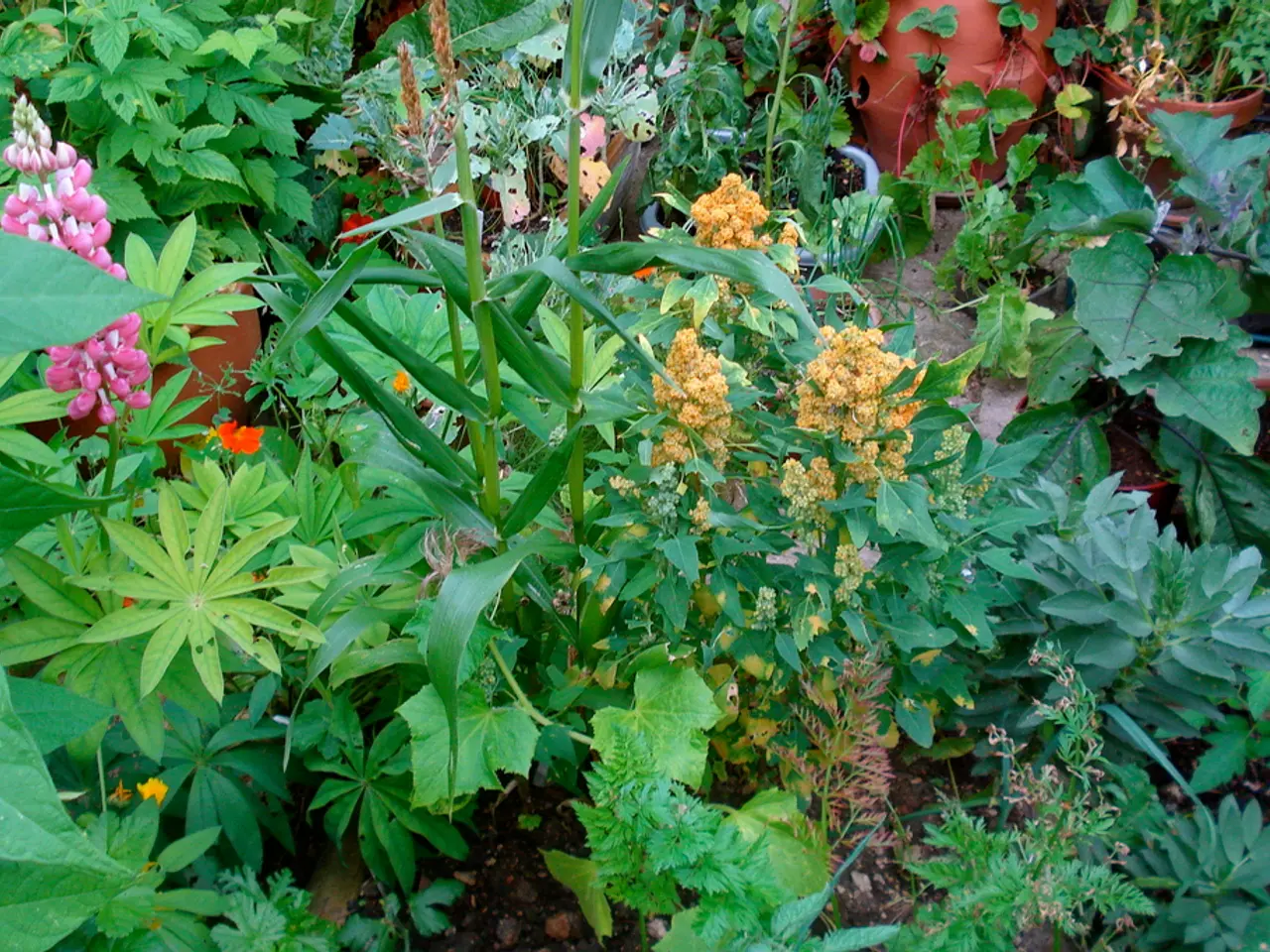Practical Gardening Suggestions for February
February Gardening: A Guide to Sowing Seeds and Preparing for the Growing Season
February is a month of preparation and sowing for many gardeners. Here's a guide to help you get started with your gardening activities this month.
Sowing Seeds
February is an ideal time to sow seeds for various flowering plants, vegetables, and cold hardy annuals. Some popular choices include cosmos, lilies, sweet peas, tomatoes, chilies, eggplants, basil, kale, and a variety of other flowering plants such as Eucomis, Liatris, Agapanthus, Galtonia, and Japanese anemones.
Cosmos can be grown from seed in peat-free compost on a tray or pot, then transplanted outdoors when the weather warms up. Lilies require a bright, sunny spot and either a heated propagator or grow light for early growth. Sweet peas can be grown individually in pots or cardboard tubes, requiring a heated propagator or grow lights for germination.
Tomatoes, chilies, eggplants, basil, and broad beans are vegetables that can be planted during this month. However, tomatoes need a minimum temperature of 10°C, and can be grown on a sunny windowsill or in a heated propagator. Basil is a warm-season plant that is best grown in a sunny spot like a windowsill or a heated propagator. Most varieties of chilies require a minimum temperature of 25°C to germinate, and can be started early in February using grow lights.
Starting Plants Indoors
Kale seeds should be started indoors if the weather is too cold, and should be sown in small pots with 2 to 3 seeds each. Herbs like dill, mint, chives, and tarragon can also be started indoors in a cool, bright place. Parsley, which germinates slowly, can be pre-grown on the windowsill.
Salvias can be started from seed using peat-free seed compost and vermiculite, then grown in a warm, bright spot indoors.
Preparing for the Growing Season
To prepare for the growing season, it is recommended to install bird baths and birdhouses to attract pollinators, knock snow off evergreen shrubs, and install a cold frame for hardening off young plants.
Garden maintenance tasks also include cutting leftover ornamental grasses, pruning flowering plants, using a shovel and rake to break compacted soil, removing congested grasses and perennials, pruning winter flowering plants after blooming, and using a hand pruner to cut old foliage before spring flower buds develop.
To maintain fruits and vegetables, it is recommended to finish winter pruning, remove weeds, add a thick layer of organic compost, sprinkle potash fertilizer, and install cloches or fleece to protect temperature-sensitive plants.
Hardy Varieties
Hardy varieties of geraniums, called cranesbills, can be grown in the garden, either in direct sunlight or shady areas.
Soil Enrichment
It is also recommended to enrich the soil with organic compost or well-rotted manure, break up compacted soil, clear unwanted debris, and repair, repaint, or replace items for outdoor gardening.
By following these guidelines, you can make the most of February to prepare your garden for a bountiful growing season ahead. Happy gardening!
Read also:
- Discovering an intriguing pastime during my vacation in Jamaica, one that's accessible to all
- Mario Draghi's Anniversary in Brussels Reflects on a Year Past
- Introducing Combinations of GS1 Standards and Tracking Systems
- Exploring the least extraordinary British design concept vehicles of the 1960s, '70s, and '80s?




